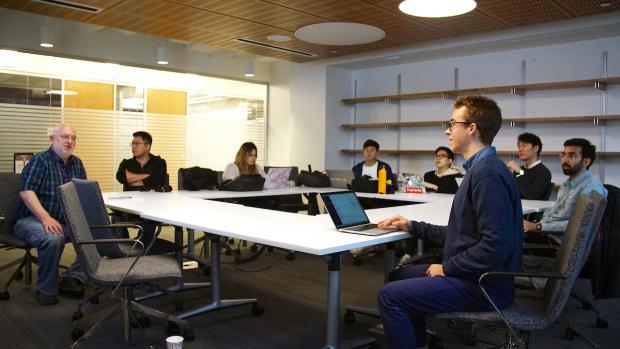Communicating in a crisis
Computer science students devise a system to improve the process

When a crisis unfolds — whether it be the outbreak of a virus, a terrorist attack, or a severe weather event such as a hurricane — it’s imperative that companies quickly respond to ensure the safety of their employees and clients, mitigate its effects on business operations, and restore normalcy. Most do so via internal methods that can range from simple group email and text messages to sophisticated emergency notification systems.
In an increasingly interconnected world, however, many crises have global implications, and maintaining an every-company-for-itself attitude is counterproductive and short-sighted.
A group of computer science students studying under Industry Associate Professor Eugene Callahan is working to create a collaborative communications system that will allow organizations to share information, quickly and seamlessly, for the benefit of all involved.
They are doing so under the auspices of NYU’s International Center for Enterprise Preparedness (INTERCEP), the first academic center ever dedicated to organizational resilience and agility. The Center encourages multi-party collaboration and takes an integrated cross-industry and public-private sector approach to addressing common risks.
“Every company with a presence in China is currently monitoring the spread of Coronavirus, to give just one example” explained Dennis Fenchenko, the student leader on the project. “Many of them have offices in industrial centers located quite close together, and if they communicated, they could pool their resources. For instance, if a company knows of a ready source of protective facemasks, it could share that information, or if someone gets data about an outbreak in a new area, that could be vital for others to know as well.”
The students have presented their prototype to INTERCEP members, including major financial institutions and internet companies, and they are looking forward to refining their software further and seeing it implemented in real-world situations.
“Tandon’s mission, in part, is to create technology that serves society, so it’s natural for our students to want to make a practical impact,” Callahan said. “These are not the sort of software engineers who only aspire to sit behind their desks and code.”




